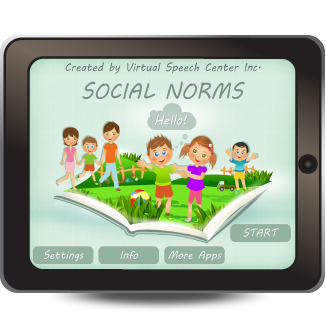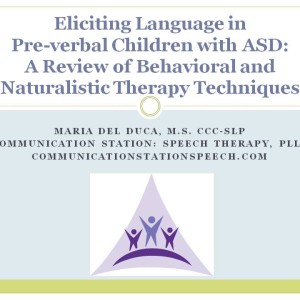 As the awareness of social pragmatic language disorders continues to grow, more and more speech language pathologists are asking questions regarding various sources of social pragmatic language testing. Today I am reviewing one such test entitled: Social Language Development Test Elementary (SLDTE) currently available from PRO-ED.
As the awareness of social pragmatic language disorders continues to grow, more and more speech language pathologists are asking questions regarding various sources of social pragmatic language testing. Today I am reviewing one such test entitled: Social Language Development Test Elementary (SLDTE) currently available from PRO-ED.
Basic overview
Release date: 2008
Age Range: 6:00-11:11
Authors:Linda Bowers, Rosemary Huisingh, Carolyn LoGiudice
Publisher: Linguisystems (PRO-ED as of 2014)
This test assesses the students’ social language competence and addresses their ability to take on someone else’s perspective, make correct inferences, negotiate conflicts with peers, be flexible in interpreting situations and supporting friends diplomatically.
The test is composed of 4 subtests, of which the first two subtests are subdivided into 2 and 3 tasks respectively.
The Making Inferences subtest (composed of 2 tasks) of the SLDT-E is administered to assess student will’s ability to infer what someone in the picture is thinking (task a) as well as state the visual cues that aided the student in the making of that inference (task b).
On task /a/ errors can result due to student’s difficulty correctly assuming first person perspective (e.g., “Pretend you are this person. What are you thinking?”) and infering (guessing) what someone in the picture was thinking. Errors can also result due to vague, associated and unrelated responses which do not take into account the person’s context (surroundings) as well as emotions expressed by their body language.
On task /b/ errors can result due to the student’s inability to coherently verbalize his/her responses which may result in the offer of vague, associated, or unrelated answers to presented questions, which do not take into account facial expressions and body language but instead may focus on people’s feelings, or on the items located in the vicinity of the person in the picture.
The Interpersonal Negotiation subtest (composed of 3 tasks) of the SLDT-E is administered to assess the student’s ability to resolve personal conflicts in the absence of visual stimuli. Student is asked to state the problem (task a) from first person perspective (e.g., pretend the problem is happening with you and a friend), propose an appropriate solution (task b), as well as explain why the solution she was proposing was a good solution (task c).
On task /a/ errors can result due to the student’s difficulty recognizing that a problem exists in the presented scenarios. Errors can also result due to the student’s difficulty stating a problem from a first person perspective, as a result of which they may initiate their responses with reference to other people vs. self (e.g., “They can’t watch both shows”; “The other one doesn’t want to walk”, etc.). Errors also can also result due to the student’s attempt to provide a solution to the presented problem without acknowledging that a problem exists. Here’s an example of how one student responded on this subtest. When presented with: “You and your friend found a stray kitten in the woods. You each want to keep the kitten as a pet. What is the problem?” A responded: “They can’t keep it.” When presented with: “You and your friend are at an afterschool center. You both want to play a computer game that is played by one person, but there’s only one computer. What is the problem?” A responded: “You have to play something else.”
On task /b/ errors can result due to provision of inappropriate, irrelevant, or ineffective solutions, which lack arrival to a mutual decision based on dialog.
On task /c/ errors can result due to vague and inappropriate explanations as to why the solution proposed was a good solution.
The Multiple Interpretations subtest assesses the student’s flexible thinking ability via the provision of two unrelated but plausible interpretations of what is happening in a photo. Here errors can result due to an inability to provide two different ideas regarding what is happening in the pictures. As a result the student may provide vague, irrelevant, or odd interpretations, which do not truly reflect the depictions in the photos.
The Supporting Peers subtest assesses student’s ability to take the perspective of a person involved in a situation with a friend and state a supportive reaction to a friend’s situation (to provide a “white lie” rather than hurt the person’s feelings). Errors on this subtest may result due to the student’s difficulty appropriately complementing, criticizing, or talking with peers. Thus students who as a rule tend to be excessively blunt, tactless, or ‘thoughtless’ regarding the effect their words may have on others will do poorly on this subtest. However, there could be situations when a high score on this subtest may also be a cause for concern (see the details on why that is HERE). That is because simply repeating the phrase “I like your ____” over and over again without putting much thinking into their response will earn the responder an average subtest score according to the SLDT-E subtest scoring guidelines. However, such performance will not be reflective of true subtest competence and needs to be interpreted with significant caution.
The following goals can be generated based on the performance on this test:
Long Term Goals: Student will improve social pragmatic language competence in order to effectively communicate with a variety of listeners/speakers in all conversational and academic contexts
Short Term Goals
- Student will improve ability to make inferences based on social scenarios
- Student will improve ability to interpret facial expressions, body language, and gestures
- Student will improve ability to recognize conflicts from a variety of perspectives (e.g., first person, mutual, etc.)
- Student will improve ability to resolve personal conflicts using effective solutions relevant to presented scenarios
- Student will improve ability to effectively justify solutions to presented situational conflicts
- Student will ability to provide multiple interpretations of presented social situations
- Student will provide effective responses to appropriately support peers in social situations
- Student will improve ability to engage in perspective taking (e.g., the ability to infer mental states of others and interpret their knowledge, intentions, beliefs, desires, etc.)
A word of caution regarding testing eligibility:
I would also not administer this test to the following populations:
- Students with social pragmatic impairments secondary to intellectual disabilities (IQ <70)
- Students with severe forms of Autism Spectrum Disorders
- Students with severe language impairment and limited vocabulary inventories
- English Language Learners (ELL) with suspected social pragmatic deficits
- Students from low SES backgrounds with suspected pragmatic deficits
I would not administer this test to Culturally and Linguistically Diverse (CLD) students due to significantly increased potential for linguistic and cultural bias, which may result in test answers being marked incorrect due to the following:
- Lack of relevant vocabulary knowledge
- Lack of exposure to certain cultural and social experiences related to low SES status or lack of formal school instruction
- Life experiences that the child simply hasn’t encountered yet
- For example the format of the Multiple Interpretations subtest may be confusing to students unfamiliar with being “tested” in this manner (asked to provide two completely different reasons for what is happening ina particular photo)
What I like about this test:
- I like the fact that the test begins at 6 years of age, so unlike some other related tests such as the CELF-5:M, which begins at 9 years of age or the informal Social Thinking Dynamic Assessment Protocol® which can be used when the child is approximately 8 years of age, you can detect social pragmatic language deficits much earlier and initiate early intervention in order to optimize social language gains.
- I like the fact that the test asks open-ended questions instead of offering orally/visually based multiple choice format as it is far more authentic in its representation of real-world experiences
- I really like how the select subtests are further subdivided into tasks in order to better determine the students’ error breakdown
Overall, when you carefully review what’s available in the area of assessment of social pragmatic abilities this is an important test to have in your assessment toolkit as it provides very useful information for social pragmatic language treatment goal purposes.
Have YOU purchased SLDTE yet? If so how do you like using it?Post your comments, impressions and questions below.
NEW: Need an SLDTE Template Report? Find it HERE
Helpful Resources Related to Social Pragmatic Language Overview, Assessment and Remediation:
- Social Language Development Test-Elementary Editable Report Template
- The Checklists Bundle
- Narrative Assessment and Treatment Bundle
- Social Pragmatic Assessment and Treatment Bundle
- Psychiatric Disorders Bundle
- Fetal Alcohol Spectrum Disorders Assessment and Treatment Bundle
- Social Pragmatic Deficits Checklist for Preschool Children
- Social Pragmatic Deficits Checklist for School Aged Children
- Behavior Management Strategies for Speech Language Pathologists
- Social Pragmatic Language Activity Pack
Disclaimer: The views expressed in this post are the personal opinion of the author. The author is not affiliated with PRO-ED or Linguisystems in any way and was not provided by them with any complimentary products or compensation for the review of this product.






 Today I am reviewing “Social Norms” a brand new app developed by the Virtual Speech Center to improve social skills in children with autism spectrum disorders.
Today I am reviewing “Social Norms” a brand new app developed by the Virtual Speech Center to improve social skills in children with autism spectrum disorders. 
 Today it is truly my pleasure to bring you a giveaway from Maria Del Duca of
Today it is truly my pleasure to bring you a giveaway from Maria Del Duca of 

 Today Thanks to the generosity of Lavelle Carlson of
Today Thanks to the generosity of Lavelle Carlson of 
 Thanks to the wonderful generosity of Amy from IGetItApps I am able to bring you the following Mega Giveaway:
Thanks to the wonderful generosity of Amy from IGetItApps I am able to bring you the following Mega Giveaway: